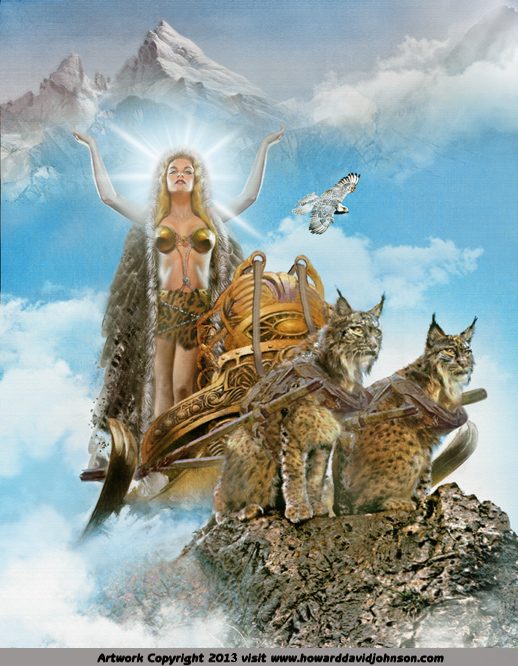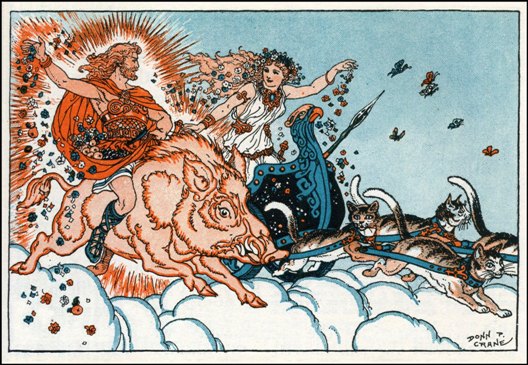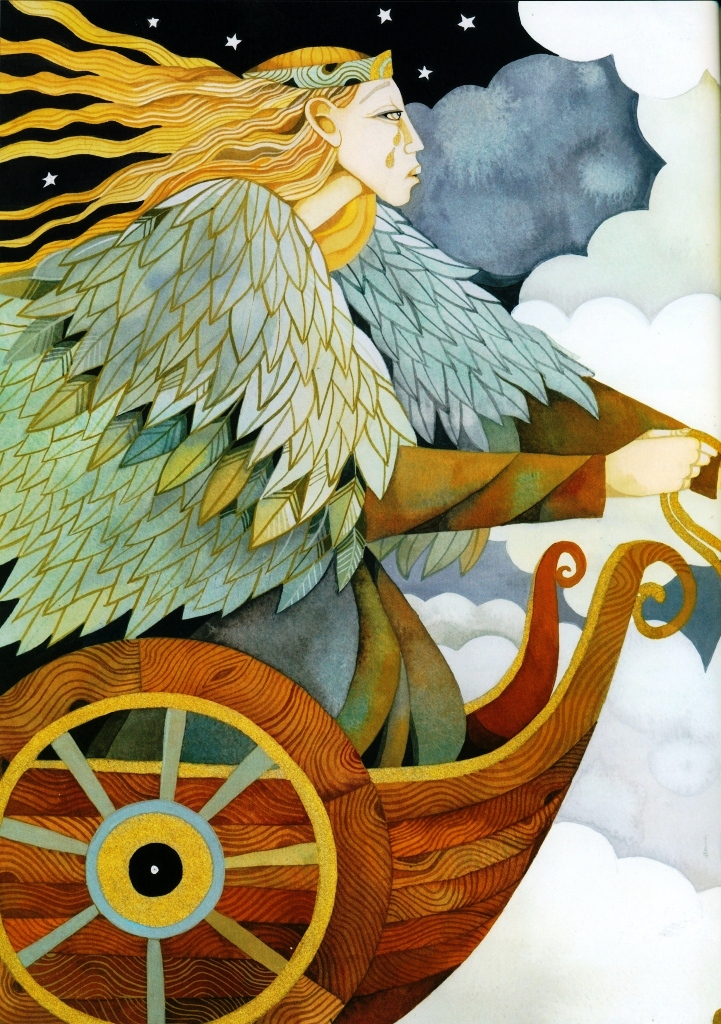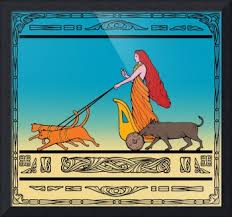HOLY CATS!
Historical Images of
Freyja's Chariot

"And when she travels she drives two cats and sits in a chariot,"
—Gylfaginning 24
[HOME][POPULAR RETELLINGS][THEMES IN OLD NORSE MYTHOLOGICAL ART]
|
Historical Illustrations
of Freyja's Chariot 1780-Present Also see: Freyja and her Necklace Brisingamen & Freyja's Fressa: A Car Drawn by Cats? From the First Muse
 1831 Artist Unknown Author: Gustav T. Legis |
||||||||||||
 1837 Leopold Ziegelhauser Allgemeine Populäre Götterlehre |
||||||||||||
|
||||||||||||
 1852 Nils Blommér |
||||||||||||
 1865 Ludwig Pietsch |
||||||||||||
  1867 Hugo Blomberg KPM (Köngliche Porzellan-Manufakur, Berlin)  1869 Artist Unknown George Eastman Collection Lantern Slide |
||||||||||||
 1881 David Murray Smith |
||||||||||||
 1883 Jessie MacGregor Sketch for the Painting "The Wanderings of Freyja" |
||||||||||||
 1884 Johann Gehrts |
||||||||||||
 1885 Lorenz Frölich (Top Panel) |
||||||||||||
 Before 1886 Artist Unknown  1889 |
||||||||||||
 1893 B.L. "Freyja's Cats" |
||||||||||||
 1894 Liebig Meat Extract Ad |
||||||||||||
 1901 H.L.M |
||||||||||||
 1905 Carl Emil Doepler ('the younger') |
||||||||||||
 1909 Maria Klugh  1909 John P. Edmison |
||||||||||||
 1920 Donn T. Crane |
||||||||||||
 1930 Charles E. Brock |
||||||||||||
 1930 Katharine Pyle |
||||||||||||
|
||||||||||||
 1978 Giovanni Casselli |
||||||||||||
 1981 Swedish Stamp |
||||||||||||
 1995 Kris Waldherr |
||||||||||||
 F is for Freyja by Marfknox-on-Etsy
|
||||||||||||
 Sandlady's Art 2008 |
||||||||||||
 2009 Woodwose at Deviant Art |
||||||||||||
 Rinisyou on DeviantArt 2010 |
||||||||||||
2012 Cat Parade, Leper, Belgium |
||||||||||||
 2013 Howard David Johnson HowardDavidJohnson.com |
||||||||||||
 2015 Dani Kaulakis 
|
||||||||||||
 Freyr and Freyja by Igor Ozhiganov |
||||||||||||
|
STRAY CATS ARTISTS UNKNOWN If you can identify the artist, please contact me
 |
||||||||||||
|
THE CART BEFORE THE HORSE Earlier Images Related to this Tradition  Witch Riding a Cat Schleswiger Cathedral, c. 12th century  Album Amicorum of Juliana de Roussel, 1669 Venus in her Car drawn by Cats |
||||||||||||
|
THE VENUS WAGON |
||||||||||||
|
The following image of Freyja's Chariot by Henry Justice Ford doesn't follow the traditional Nordic sources, in that he has her chariot pulled by swans. However, he seems to have merely substituted Freyja from the Greco-Roman goddess Venus or Aphrodite. An image of the goddess Venus in her wagon pulled by geese appeared in several early sources that described Germanic Gods. Through interpretatio romana, Venus was identified with the Germanic goddess Frija (identified as Frigg or Freyja) in the 4th century transliteration of the weekdays where the Latin dies Veneris became the English Friday. In Greek Mythology Aphrodite's chariot was drawn by doves or swans. She is sometimes depicted riding a goose or swan side-saddle. |
||||||||||||
 The Golden Chariot of Freya  1492 Conrad Bote Cronecken der Sassen The Saxon Chronicle  1588 Johannes Pomarius Chronika der Sachsen und Niedersachsen The Chronicle of Saxony and Lower Saxony  1691 Trogillus Arnkiel's Cimbrische Heyden-Religion The Cimbrish Heathen Religion |
||||||||||||
[POPULAR RETELLINGS]





















